Matador Network's Blog, page 809
August 6, 2020
Best national park for every travel

When it’s time to get out in the wild in the United States, you’ve got an astounding 62 national parks to choose from. But that’s just the problem: You have to choose. To make it easier on you, we looked across the country and selected the absolutely best national park for your circumstances — whether that’s traveling with kids or a furry friend or your fiance — or what you plan to do, be it camping or fishing. Some of the national parks are better known, some are less expected, but all are perfect for what you need.
Best national park for kids: Lassen Volcanic National Park, California

Photo: Dreamframer/Shutterstock
Kids love volcanoes, and there’s no better national park in the contiguous United States to explore them than Lassen. Little ones will learn that there are four types of volcanoes — lava domes, cinder cones, composite volcanoes, and shield volcanoes — and they can see all four within the park. In fact, the park’s namesake Lassen Peak is the largest plug dome volcano in the world.
Your kids will walk next to boiling water and gurgling pools of mud, dazzled by the plumes of fumaroles heading skyward. They’ll see vast fields of hardened lava, and see how life is springing back slowly over time. It’s all probably more interesting to them than another pretty mountain view — although there are plenty of those as well, since Lassen is located where the volcanic Cascade Mountains meet the Sierra Nevada range. So the 150 miles of hiking trails don’t just pass by eerie calderas, but they also traverse pine forests and skirt piercingly blue alpine lakes. Of these, Manzanita Lake is the best for boating, and you can rent kayaks, canoes, or stand-up paddles.
In winter, the family can cross-country ski or snowshoe, perhaps joining a ranger-led snowshoe excursion. Kids should also stop by the visitors center to pick up a Volcano Club Card and complete the activities to be eligible for a Volcano Club patch.
Best national park for hiking: Olympic National Park, Washington
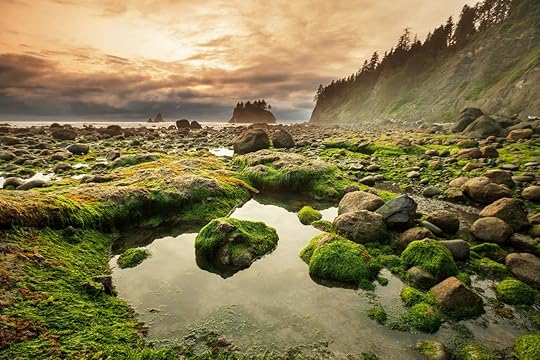
Photo: Galyna Andrushko/Shutterstock
For diversity of landscapes, it’s hard to beat the 611 miles of trails at Olympic National Park in Washington state’s Olympic Peninsula. One of the best-loved hikes in the park takes you through the Hoh Rain Forest, one of the world’s few temperate rainforests, which gets 140 inches of rain per year. The ground is packed with ferns while trees are completely covered in bright green moss, making for an eerie, emerald-hued version of an enchanted forest. While that ramble is flat and suitable for all levels, more rigorous trekkers have plenty of other options. You can hike to waterfalls and glacier-fed rivers, or along Hurricane Ridge, always windswept and often snow-covered well into summer.
Add to that coastal trails, since a long stretch of the park runs along the wild Pacific Ocean, complete with sea stacks and tide pools, and it comes out to an astounding variety of hiking choices. Your Instagram followers won’t believe that all those photos — with glowing green trees, glacier-capped peaks, alpine lakes, cascading waterfalls, and crashing ocean waves – each came from a visit to a single, stunning national park.
Best national park for camping: Sequoia & Kings Canyon National Park, California
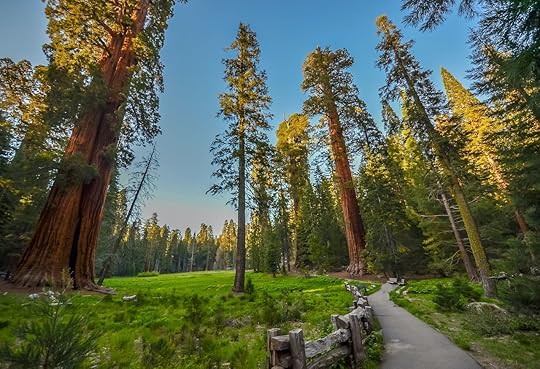
Photo: Asif Islam/Shutterstock
The two jointly administered parks have 14 campgrounds between them, including everything from lower elevation campsites in the foothills that are snow-free in winter to campgrounds at higher altitude that stay pleasantly cool in the warmer months. Kings Canyon and Sequoia — which rival Yosemite with their own sheer granite walls, scenic meadows, and alpine peaks — nonetheless attract far fewer visitors than their northern neighbor — meaning you’re also more likely to snag a campground here in the height of summer.
The three campgrounds near Grant Grove put you in strolling distance to the General Grant tree, the second largest living organism in the world. Waking up surrounded by stately giant sequoias – that have each been growing for thousands of years — is its own form of meditation, as stress-eliminating an experience as you can find. The campgrounds in Cedar Grove lie along the Kings River, flanked by King Canyon’s granite walls, while the Lodgepole lies at 6,800 feet. From there you can walk two miles to Giant Grove and behold the German Sherman tree, the largest tree on the planet. Full-service campgrounds come with showers, hot water, electrical hookups, and a nearby general store while primitive campgrounds come with the sound of silence. You can also camp in the high Sierra backcountry with a permit.
Best national park for stargazing — Bryce Canyon National Park, Utah
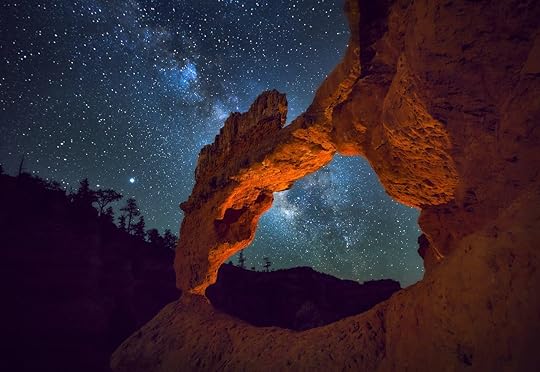
Photo: Johnny Adolphson/Shutterstock
National parks in desert areas from California to Texas all have incredible night skies — located far from city lights and in arid plains where the air is clearer. The dry weather is free from the moisture that muddies crisp astral views; it also ensures you’re more likely to have a rain- and cloud-free night to begin with. Among all the great nighttime viewing options, we’re going with Bryce Canyon on this one, because there’s nothing quite like observing the stars framed by the canyon’s hoodoo spires.
Moreover, Bryce makes stellar observation easy and welcoming, with over 50 telescopes available for use at the Bryce Canyon City Telescope Field, as well as programs led by
astronomers certain nights of week, and an annual Astronomy Festival. In the winter, you can take ranger-guided snowshoe hikes on evenings with a full moon.
Best national park for backpacking — Grand Teton National Park, Wyoming
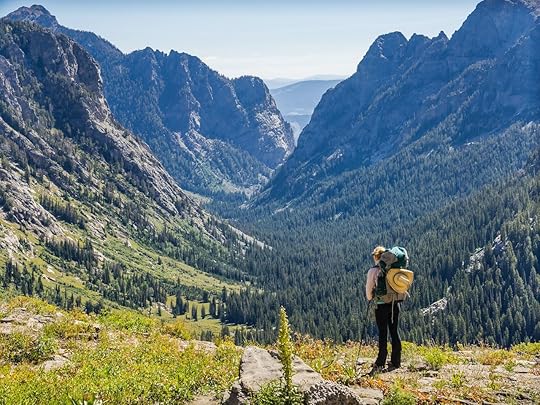
Photo: aaronj9/Shutterstock
The untamed wilderness of Grand Teton National Park was pretty much meant to be explored on multi-day backpacking trips, with the signature Teton Crest Trail — which runs 26 to 37 miles, depending on routing — widely regarded as one of the most stunning treks in the country. The trail runs alongside the Teton Range, nearly always keeping in view the three Teton peaks, the South, Middle, and Grand Teton. You’ll hike along Hurricane Pass, alongside Lake Solitude, and even the Death Canyon Shelf, passing fields bursting with wildflowers.
There are also several single-night overnight trips you can take within the park’s 485 square miles, such as the 23-mile loop through Paintbrush Canyon to Inspiration Point and Jenny Lake. The Tetons are part of the greater Yellowstone ecosystem, and you’re likely to see moose, pronghorn, and bison. You’re in bear country here, as both black bears and grizzlies call the Tetons home, so you’ll need to follow precautions like ensuring bears aren’t surprised by your presence and storing food in bear-safe canisters. (Consider non-toxic bear spray as well.) You’ll also need a backcountry permit; you can get some in advance, but the park holds a third of these for walk-ins.
Best national park for wildlife: Everglades National Park, Florida
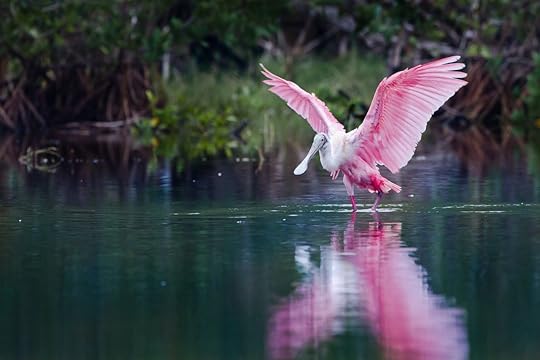
Photo: jo Crebbin/Shutterstock
Among the national parks known for wildlife, Yellowstone gets most of the attention from documentarians and animal lovers. Down at the tip of Florida, however, the Everglades offer the chance to see animals in their natural habitat that you won’t find anywhere else. The Everglades cover around 1.5 million acres, making it the largest subtropical wilderness in the US. There are spots of freshwater a short distance away from seawater and the brackish home of mangrove forests. Winding footpaths over the water meet the terrestrial environment. This diversity is part of what makes it such a thrilling spot for wildlife.
Everglades National Park is the best place to see manatees, flamingoes, alligators, river otters, and the endangered Florida panther. It’s also the only spot in the US where alligators live alongside American crocodiles, which are at their northernmost reaches in Florida. Pythons that have escaped (or were released) from captivity have hurt the population of native species, but there’s a chance you’ll still have to wait for an alligator (or one of the other 50 reptile species in the park) to cross your path while a number of the 360-plus species of birds found in Everglades National Park fly overhead.
Best national park for RV camping: Shenandoah National Park, Virginia
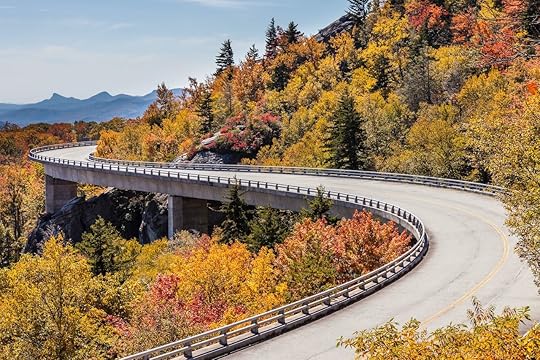
Photo: Anton Ermachkov/Shutterstock
The best national parks for RVs have gorgeous roads and parking spots in the center of nature. Shenandoah National Park is a short drive from the Eastern Seaboard and offers one of the most scenic roadways — especially in the fall when the leaves start to turn. The first order of business for RVers should be to cruise the curvy Skyline Drive to catch the views of the mountains. RV-friendly campgrounds are scattered throughout, making it easy to stay close to the waterfalls and extensive hiking network in the park.
Shenandoah is a must for the RV crowd for another reason as well: it’s connection to the Blue Ridge Parkway. After exploring Shenandoah, extend your trip by driving onto the winding road, which covers 469 miles through the Appalachian Highlands and is the connection between the Great Smoky Mountains and Shenandoah National Parks. The drive has some tight curves, but nothing unmanageable — just make sure you pull off at a designated spot before stopping to soak in all the beauty there is to see. Among the natural wonders to see along the Parkway: the highest mountain peak in the east at Mount Mitchell, the oldest river in North America (ironically called New River), the highest waterfall east of the Rockies at Whitewater Falls, and the deepest gorge east of the Grand Canyon at Linville Gorge.
Best national park for fishing: Great Smoky Mountains National Park, Tennessee

Photo: Geir Olav Lyngfjell/Shutterstock
Variety is a fisherman’s best friend, and you’ll find plenty of it in Great Smoky Mountains National Park. There are nearly 3,000 miles of streams (all of which allow fishing), and around 20 percent of them make up one of the last wild trout habitats in the eastern half of the US. Fishing is allowed year-round, and you can catch various species of trout as well as bass in the streams and lakes.
What makes fishing Great Smoky Mountains special is that the waters mostly aren’t stocked because it’s simply not needed. The National Park Service notes that most streams “remain at or near their carrying capacity of fish.” The fisheries department found that many streams have between 2,000 and 4,000 trout per mile, ranging from rainbow trout up to eight inches and brown trout up to 20 inches. The latter is a heartwarming success story, and the brown trout population was in a precarious position in the 1970s. Thanks to conservation efforts, brown trout was officially declared stable in 2006 and is an option for anglers to today.
Best national park for dogs: Acadia National Park, Maine
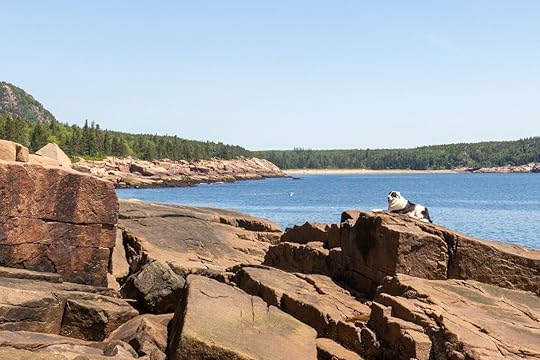
Photo: Mike Photoluvr/Shutterstock
Acadia is one of the smallest national parks (just 49,000 acres), but it’s perfect for dogs. There are 100 miles of dog-friendly hiking trails in the mountains and along the Maine coastline. One high point (literally) to take your pet is the park’s Cadillac Mountain, which climbs 1,530 feet up and looks over Somes Sound.
Acadia has more dog-friendly options than most national parks, but there are still some hikes that are either people-only or that should be taken on by experienced pups. For the full experience, become an Acadia Bark Ranger.
Best national park for kayaking and paddleboarding: Channel Islands National Park, California
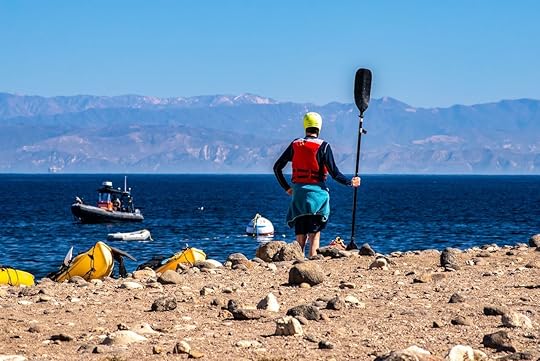
Photo: Brian Swanson/Shutterstock
The clear, wildlife-filled waters of Channel Islands National Park are calling. Just a short boat ride away from the California coast (Santa Barbara, Ventura, and Oxnard are all options to leave from), the Channel Islands provide a number of ocean kayaking and paddleboarding options. Experienced kayakers can island hop between the eight islands, though the waters are a little rough for paddleboards or people new to kayaking. Keep an eye on the tide and weather, and it’s best to go with a guide from Santa Cruz Island on your first trip.
The calmer waters are still more than worth the trip. There are sea caves to explore at low tide, and sea lions rest on rock formations as kayakers pass by while bright orange garibaldi, the California state fish, can be spotted swimming below. It’s also common to see pods of dolphins and, depending on the season, gray whales in mid-migration from the waters off the coast of Mexico to the shores of Alaska.
Best national park for rock climbing: Joshua Tree National Park, California
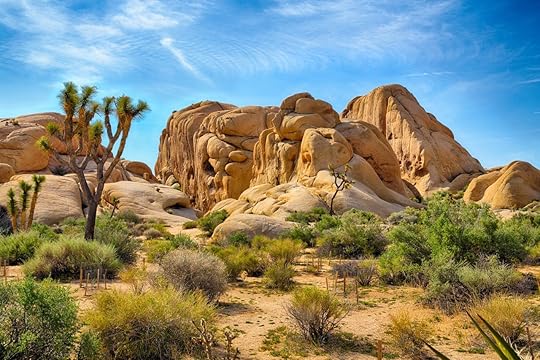
Photo: Gary C. Tognoni/Shutterstock
Long before Alex Honnold completed his hard-to-comprehend free, solo climb up the 2,900-foot face of El Capitan, Yosemite was already in the popular imagination as the ultimate rock-climbing destination. And while the sheer granite slabs of Yosemite Valley may still be the holy grail for experienced climbers, there’s another destination, further south in California, that offers a lot more variety and plenty of options for everything from beginning to expert climbers. Joshua Tree is best known for its unusual agave plants that look like trees from a sci-fi iteration of an alien planet, but Joshua Tree also has rocks. Lots of rocks.
With over 8,000 routes and 2,000 boulder problems on tough quartz monzonite granite, Joshua Tree offers up every kind of rock face, including cracks and slabs, that climbers can hook their heels or jam their hands into. Quail Springs Rock and Intersection Rock are good places for beginners, while experts will appreciate the steep climbs at Clean and Jerk or overhanging climbs like at Big Moe. You can rock climb and boulder at Joshua Tree all year, but summers can get hot. Note that since you are in the high desert, winter nights can be very chilly, but daytimes temps are plenty comfortable.
Best national park for a honeymoon: Virgin Islands National Park, US Virgin Islands
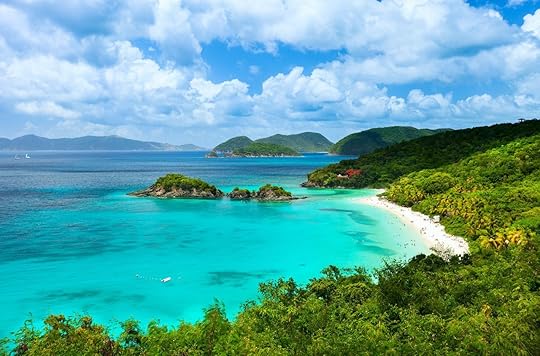
Photo: BlueOrange Studio/Shutterstock
Have your Caribbean island honeymoon at a national park on St. John island in the US Virgin Islands. The parkland-to-private property ratio is higher on St. John than anywhere else in the US, with two-thirds of the 28-square-mile island dedicated to the national park. The options to fill your itinerary include hiking, beaches, and visiting historic sites of the indigenous Taino people. Or you can just do nothing at all and relax on the white sand beaches after snorkeling the coral reef at the nearby Coral Reef National Monument.
If you’re still not convinced about Virgin Islands National Park being the perfect honeymoon spot, keep in mind that there’s a beach in the park called Honeymoon Beach. 
More like thisParks + WildernessThe 10 least-visited national parks in the US, and why you should go
The post The best national parks for every type of traveler appeared first on Matador Network.

US lifts ‘Do Not Travel’ advisory
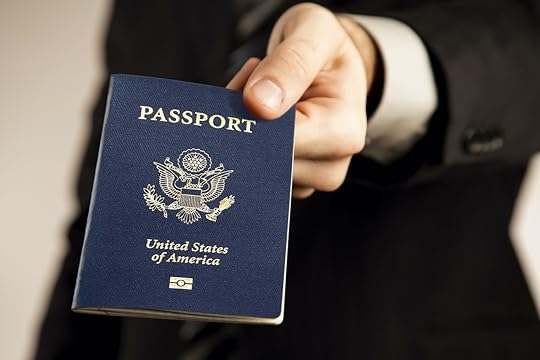
On March 19, the US State Department issued a Level 4: Do Not Travel advisory to American citizens, warning them not to travel abroad. Now the government is lifting this advisory amid international improvements in public health and progress fighting COVID-19.
According to a note from the State Department, “with health and safety conditions improving in some countries and potentially deteriorating in others, the Department is returning to our previous system of country-specific levels of travel advice (with Levels from 1-4 depending on country-specific conditions), in order to give travelers detailed and actionable information to make informed travel decisions … We continue to recommend U.S. citizens exercise caution when traveling abroad due to the unpredictable nature of the pandemic.”
Replacing the Level 4 advisory will be more individualized recommendations for countries, based on their specific public health situation. Although the US government is no longer warning citizens to avoid all international travel, they do still advise an abundance of caution. The State Department may still advise against travel to countries with high rates of COVID-19 transmission, like India, Brazil, and Russia.
By no stretch of the imagination does this mean travel is returning to normal, being that one of the highest risk countries in the world is the US. Many nations still have travel restrictions in place against US tourists, making international travel incredibly difficult. 
More like thisTravelThe days of US passport dominance may be over
The post US State Department lifts ‘Do Not Travel’ advisory for international travel appeared first on Matador Network.

Amazon’s ‘The Pack’ travel show

New TV shows are on hold right now due to COVID-19, but Amazon is gearing up to satisfy audiences’ thirst for travel content during the pandemic. Amazon Studios just ordered a new show resembling The Amazing Race, but where each contestant partners with their dog in pursuit of the $500,000 grand prize. That means the pairs might actually get along.
According to Albert Cheng, Co-Head of Television at Amazon Studios, “The Pack is an uplifting and exhilarating new unscripted series, celebrating one of the most unique and universally recognized relationships we have — between people and their best friends.”
The show will feature 12 teams of dogs and their owners setting off on a globetrotting adventure. The teams will face several challenges designed by certified veterinarians and dog experts, who will also join the teams on their journey to ensure the safety of the canine competitors.
The show will be hosted by Olympic Gold medal skier Lindsey Vonn, accompanied by her dog Lucy. “I have overcome many obstacles in life,” said Vonn, “but one thing that has reigned true during good times and bad has been the love of my dogs. Like many times before, Lucy will be by my side on yet another one of life’s adventures, and I’m excited for everyone to watch and cheer on these incredible contestants and their beloved companions.”
According to a press release the show will debut on Amazon Prime later this year. 
More like thisTVThe best TV show set in every state
The post Lindsey Vonn’s new Amazon show is ‘The Amazing Race’ with dogs appeared first on Matador Network.

National monuments by national parks

Road trip season is likely to be extended this year, if for no other reason than there isn’t much else to do. Should a national parks trip across the western United States be on your radar, we urge you to reconsider. Or at least consider adding another stop to the itinerary. These national monuments are equally beautiful, and often less crowded, and you won’t have to sacrifice the world-class recreational activities for which our protected lands are known. Get out there and experience these stunning national monuments, which are surprisingly close to some of the country’s most popular national parks.
1. Devil’s Postpile National Monument — California
Nearby National Parks: Yosemite, Death Valley, Kings Canyon, Sequoia

Photo: Tiffany Chan/Shutterstock
The Sierras are loaded with jaw-dropping parks and towering rock features. Which makes it surprising that while Yosemite National Park drew five million visitors in 2016, Devil’s Postpile National Monument — just over an hour south — drew only 134,000, according to a five-year average from the National Park Service. At first, the “postpile” itself looks like the falling remnants of a fence commissioned by the ultimate society-hating mountain man, firmly securing his isolation from the world. When you stop to realize that it’s a natural occurrence, that these 60-foot-tall basalt columns somehow evolved to this place and formation, well, it’s safe to say you won’t be thinking about Half Dome anymore that day.
While there, check out the 101-foot-tall Rainbow Falls — 2.5 miles each way for the trek. Hike into the Ansel Adams wilderness or to the Minaret Falls adjacent to the monument grounds. Or, if ski touring is your thing and it happens to be winter, you can actually ski in and out of the monument via what’s called a “skin trail,” carved by uphill-ready skis slushing through the snow.
2. Grand Staircase-Escalante, Bears Ears, and Vermillion Cliffs National Monuments — Utah and Arizona
Nearby national parks: Grand Canyon, Capitol Reef, Zion, Arches, Canyonlands

Photo: Doug Meek/Shutterstock
Visiting Grand Staircase-Escalante or Bears Ears National Monument is a great way to stand up for conservation. In 2017, President Trump cut the size of Grand Staircase-Escalante by 47 percent and Bears Ears by a drastic 85 percent in order to open up land for oil and gas leasing, a move being challenged in court by multiple parties. The slot canyons, hiking trails, and rock features of the monuments are as beautiful and unique as anything found at Canyonlands National Park. At Grand Staircase-Escalante, pass through Zebra Slot Canyon, the entrance of which is a 2.6-mile hike.
Bears Ears is home to some of the best-preserved petroglyphs in the American West on Newspaper Rock. To go even further, hike past Native ruins on Comb Ridge or backpack some (or all) of the 52-mile Grand Gulch. Here, you’ll see rock art so vivid that you’ll have a tough time believing it’s 2,000 years old, until you see the nearby — and equally mind-blowing — Native American ruins.
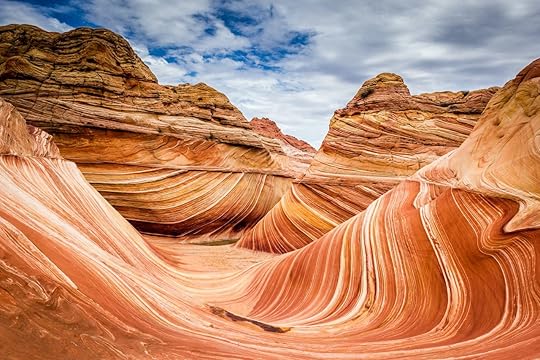
Photo: iacomino FRiMAGES/Shutterstock
If you want to disappear for a while, Vermillion Cliffs National Monument is about the best place to do so in the lower 48. Here, 280,000 acres of rock-lined valleys, buttes, and plateaus are surrounded by Glen Canyon National Recreation Area on one side and the Kaibab National Forest on the other. There is no visitor center, nor busloads of international tourists snapping quick shots of the death-defying cliff drops. Pull a permit to hike the North and South Coyote Buttes, do a multi-day canyoneering trip through Paria Canyon, or take it a bit easier on a full-day hike to views of the swirling sandstone of The Wave, the one aspect of the park that is well-known on Instagram. Be warned: Only 20 hikers per day are allowed to visit.
3. Colorado National Monument — Colorado
Nearby national parks: Arches, Canyonlands, Rocky Mountain

Photo: Zack Frank/Shutterstock
For the intrepid conservationist, few places hold more steam than Edward Abbey’s old stomping grounds of Arches National Park. Hiking through Devil’s Garden is an incredible experience, to be sure, but those who actually read Desert Solitaire are quick to point out that the paved road leading to its now-crowded parking lot was something Abbey was so passionately against that his pen furiously met paper, though the effort ultimately proved futile. Not to mention that the Moab area is three degrees above hot as hell in the summer. Two hours east lies Colorado National Monument, home to Monument Canyon — an expansive area of towering sandstone monoliths and pillars, many of which you can overlook with as little as a five-minute walk.
The road through the monument offers several stopping points to look out over the canyon and across other moon-ish looking rock formations along the way. Should you wish to spend more time out of the car, try the Liberty Cap or Devil’s Kitchen trails — bonus if you do them during sunrise or sunset. Western Colorado is also quite toasty from July to mid-September, but it’s a little higher and cooler than Moab. And, as the photo above shows, Colorado National Monument is one of the most photogenic spots in the country.
4. Upper Missouri River Breaks and Pompeys Pillar National Monuments
Nearby national parks: Glacier, Yellowstone, Grand Teton

Photo: BackEastCreative/Shutterstock
Glacier National Park and the big-mountain terrain of Big Sky Resort are all the proof you need that Montana is an outdoors person’s dream. That’s not even taking into consideration the Upper Missouri River Breaks National Monument, which in addition to extensive stretches of floatable river offers access to both the Lewis and Clark National Historic Trail and the Nez Perce National Historic Trail. You can also fish, hunt, and spot everything from deer to grouse to raptors — wilderness-worthy diversity at its finest.
Further south, Pompeys Pillar National Monument, named after the son of Sacagewea, offers easy access to a famous rock pillar that bore witness to Native tribes and later, pioneer life. An afternoon is plenty of time here as the monument is small — just be sure to snap a photo of Captain William Clark’s signature in the rock.
5. San Juan Islands National Monument — Washington
Nearby national parks: Olympic, Mt. Rainier, North Cascades

Photo: Vikki Hunt/Shutterstock
San Juan Islands National Monument encapsulates the stunning islands of the Puget Sound in all their glory. There are more than 450 islands to choose from, depending on your activity preference. For camping, hit up Blind Island. For hiking, try the Iceberg Point Trail on Lopez Island or the Mount Finlayson Trail on San Juan Island itself. Cattle Point is the place to gaze at the Strait of Juan De Fuca and out across the sound and at its bluffs, the coastal Pacific Northwest’s iteration of craggy cliffs. Of course, kayaking the sound is a right of passage for outdoorsy in the area, and you’d do right to give it a go — er, a paddle. 
More like thisOutdoorThis road trip shows there’s even more to Utah than its national parks
The post Stunning national monuments by the best national parks in the American West appeared first on Matador Network.

LA COVID-19 measures, house parties

COVID-19 public health orders are much more unenforceable than previously thought, and Los Angeles mayor Eric Garcetti is showing the way. On Wednesday, Garcetti announced that he will authorize the city to shut off water and power to properties that host large house parties in defiance of health officers’ orders regarding COVID-19.
Large gatherings are prohibited by the county’s public health orders since parties are considered to be a prime environment for the virus’ spread. According to the Los Angeles County Department of Public Health, 60 percent of new COVID-19 cases in the area are occurring in people between 18 and 49 years old, showing that younger residents are being increasingly careless when it comes to social distancing.
Starting Friday, Garcetti said, “If the LAPD responds and verifies that a large gathering is occurring at a property, and we see these properties reoffending time and time again, they will provide notice and initiate the process to request that [the Department of Water and Power] shut off service within the next 48 hours.”
The new order will not be targeting small gatherings but rather large parties held specifically to break the rules, which pose a significant threat to public health.
“The consequences of these large parties ripple far beyond just those parties,” said Garcetti. “They ripple throughout our entire community because the virus can quickly and easily spread.”
Los Angeles is the US county the most affected by COVID-19 with almost 200,000 confirmed cases, according to Johns Hopkins University. 
More like thisTravelWhy the streets of Los Angeles seem to make no sense
The post Los Angeles mayor will shut off water and power to houses hosting large parties appeared first on Matador Network.

Pygmy hogs are under virus lockdown
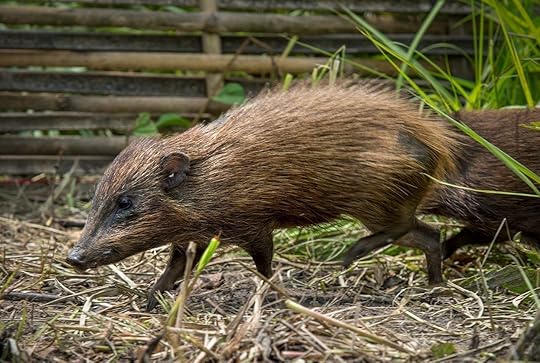
Humans aren’t the only ones under a lockdown for health reasons. Pygmy hogs, the world’s smallest and rarest wild pigs, are also currently under lockdown, but it’s because of an outbreak of African swine fever in India. Much like the coronavirus, there is no cure or vaccine for the contagious disease, and it’s already killed over 16,000 domestic pigs in the country, AP reports.
Pygmy hogs are wild pigs living in the foothill plains south of the Himalayas. They are 12 inches tall and have the particularity to build nests out of dry grass where entire families live.
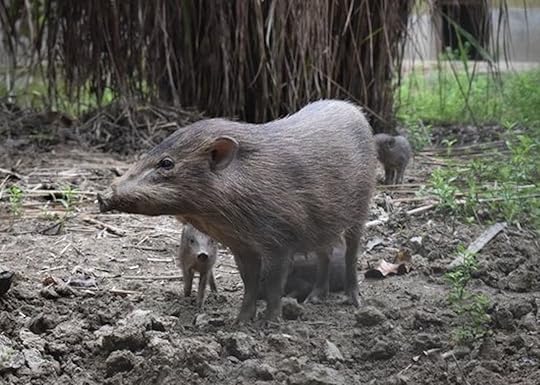
Photo: Durrell Wildlife Conservation Trust/Facebook
The pygmy hogs were on the brink of extinction in the 1960s due to habitat loss, though conservation efforts from Durrell Wildlife Conservation Trust and a captive breeding program have helped the species rebound. But scientists are afraid the swine fever could devastate the population of 300 pigs that live in the northeastern Indian state of Assam if appropriate measures aren’t taken.
At breeding centers in Nameri and Guwahati, the 82 pigs are getting used to their own “new normal.” Scientists have built security fences, and their diet has shifted away from root vegetables to fruit and grains since the virus lives longer in soil. Staff members working at the facility are now required to leave their shoes at the entrance, shower, wash hands and feet, and dip their feet in a viral solution before going inside.
The disease has already started spreading among wild boar populations in the area, making the outbreak difficult to contain. 
More like thisWildlife7 animals saved at the 11th hour, and why there is hope for the world’s species
The post The world’s smallest wild pigs are now under virus lockdown appeared first on Matador Network.

What is an absentee ballot

Americans are taught early on that voting is a right. Every fourth November, and increasingly during primary and local elections, eligible voters are reminded to register, hit the polls, and do their civic duty. They’re not told where the polls are or how to cast a ballot. And there’s rarely any mention of what to do if you’re unable to hit your local polling station come Election Day.
For overseas and out-of-state Americans, uncertainty about absentee ballots might dissuade voters. But voting is our right and our civic duty. And it’s easier than you might think no matter where in the world you are. Here are all your questions about absentee voting answered.
Editor’s Note: The information below is subject to change during the 2020 presidential election due to COVID-19. As the situation unfolds, stay apprised of your state’s voting protocol here.
What’s an absentee ballot?
Who’s eligible for an absentee ballot?
Is absentee voting different from mail-in voting?
How can I register to vote from a different country?
What about voting in a different state?
What’s an absentee ballot?
In the United States, most votes are cast in person. Registered voters show up to their local polling station determined by their address, fill out their ballot, and leave with an “I Voted” sticker as validation for exercising their civic responsibility. Absentee ballots were designed to give voters who are unable to cast their ballots in person on Election Day a mail-in alternative. Traditionally, this included military members and families stationed overseas and other overseas citizens.
Who’s eligible for an absentee ballot?
Voter registration is decided at the state level, meaning the rules around absentee voting vary. Per a 1986 voting act, all 50 states are required to provide absentee ballots to military members and other US citizens living abroad. Others may also qualify as absentee voters. This might include voters with illnesses, injuries, or disabilities; students who attend college or university out of state; election workers or those on jury duty; business or leisure travelers; incarcerated citizens who are eligible to vote; or those with religious conflicts.
Currently, 29 states and Washington, DC, allow no-excuse absentee voting, meaning voters do not need to provide a reason when applying for a mail-in ballot. Sixteen states do require excuses, and five states conduct elections exclusively by mail. Find more information on a state’s rules for absentee voters on the National Conference of State Legislatures’ website.
Is absentee voting different from mail-in voting?
Yes and no. Though the terms are sometimes used interchangeably, mail-in voting can refer to any ballot that is submitted by mail whereas absentee voting refers specifically to ballots cast under conditions that prevent in-person voting. These ballots must be requested and approved while some mail-in ballots are sent to voters automatically.
The language can be tricky here. You may see references to mail, mailed, mail-in, by-mail, all-mail, advance, and early voting when researching your state’s election rules. Consult this voting guide from the Federal Voting Assistance Program (FVAP) if you have questions.
How can I register to vote from a different country?
First thing’s first: Overseas voters must be registered to vote in the US to apply for an absentee ballot. Then, it’s a two-step process: First, voters are required to submit a Federal Post Card Application (FPCA). FPCAs can be filled out online or requested at a US embassy or consulate and returned by mail, fax, or email. The State Department recommends that absentee voters apply at the beginning of the year or at least 45 days before an election. Overseas voters must complete a new FPCA every year or every time they move.
Once approved, absentee voters can expect to receive a mail-in ballot 45 days before November general elections or 30 days before primary and special elections. Note that some states only send absentee ballots for federal elections. Voters must then complete and return their ballots according to their state’s deadline. Ballots can be mailed, sent via courier service like UPS or FedEx, or returned to a US consulate or embassy addressed to the voter’s local election officials in a pre-paid envelope. Some states send and accept ballots by fax or electronically, as well. Refer back to the FVAP voting guide to check your state’s policies.
In the event that a mail-in ballot does not arrive within a month of Election Day, overseas voters can fill in the emergency Federal Write-In Absentee Ballot (FWAB). Should their state ballot arrive after they’ve submitted the FWAB, voters should still submit and complete their state ballot. Only one vote will be counted toward the election in question.
What about voting in a different state?
Because voting operates at the state level, voters living outside of the state they’re registered in during elections may be eligible for an absentee ballot. This is particularly common among out-of-state college students. In such cases, voters with temporary addresses can generally choose to vote absentee for their home state or re-register to vote in the state they’re living in when elections are held. This may be a strategic choice, decided by where a voter thinks their ballot will have the most impact, or a matter of convenience. That’s up to the voter. 
More like thisActivismThe year women became eligible to vote in each country
The post Americans, voting abroad is easier than you think appeared first on Matador Network.

Hunt for 10 chests containing $1 mil

A massive treasure hunt is about to get underway across the country, and the reward is nothing to sneeze at. Over $10 million dollars in cash is spread out across California, Florida, Georgia, Illinois, Michigan, New York, North Carolina, Ohio, Pennsylvania, and Texas, as part of The Blackbeard Treasure. Buried in cities and towns, each state will have $1 million waiting to be found.
Each treasure chest will contain $1 million in cash, a location beacon, and a hidden camera pointed at the location of the chest. When each chest is found, winners will remove the key taped to the chest, open it, and receive their winnings. A phone number will be provided for winners to call to officially claim the treasure.
Treasure hunters will have to download a digital map, clues, and riddles to lead them to the treasure chests. A limited number of maps can be purchased on The Blackbeard Treasure website for $49.99, and will become available starting August 8.
Justin Cohen, managing director of The Blackbeard Treasure, said, “With The Blackbeard Treasure hunt, our goal is to get people excited about getting outside, either by themselves or with friends and family, in order to have the adventure of a lifetime. And in the process of having the time of your life, you may just unearth a fortune.” 
More like thisArt + Architecture7 historic treasures destroyed in wars that travelers will never get to see
The post 10 treasure chests containing $1 million each to be hidden across the US appeared first on Matador Network.

Singapore electronic tracking

Starting on August 10, Singapore will require all incoming travelers to quarantine at home for 14 days with electronic monitoring devices that use Bluetooth and GPS signals.
The devices allow government agencies to track travelers’ movements to ensure they’re adhering to the quarantine. Those who decide to quarantine in dedicated facilities rather than at home will not be fitted with the device.
Upon clearing immigration, travelers over 12 years old will be given the devices and are required to activate them once they arrive at their quarantine location.
Since March 21, 2020, incoming travelers to Singapore have been asked to quarantine for 14 days. Those who quarantine at home have been monitored via text messages, phone calls, video calls, and house visits.
According to the government, no voice or video is being recorded and your location is kept private. The official announcement says, “The devices do not store any personal data and do not have any voice/video recording function. Data transmitted from the devices to the authorities’ backend system, such as the GPS and 4G/Bluetooth signal data, is protected by end-to-end certificate-based encryption.”
Singapore’s system is similar to procedures already in place in Hong Kong and South Korea, where travelers are also required to wear tracking devices upon arrival. 
More like thisNewsYou can take a giant slide to your gate at the already insane Singapore Changi Airport
The post Singapore will track travelers with electronic devices to make sure they’re quarantining appeared first on Matador Network.

‘Into the Wild’ bus moved
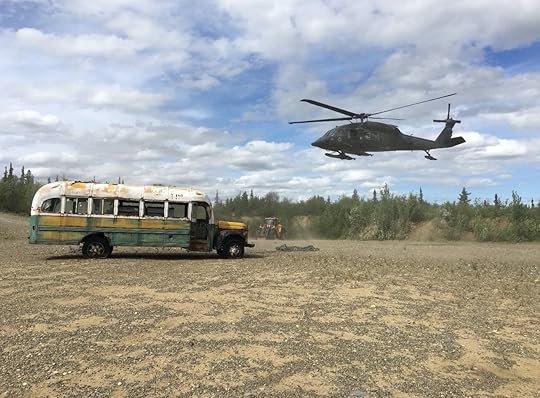
The Into the Wild bus, made famous by the real-life and ill-fated wilderness adventures of Chris McCandless, will now call a museum in Fairbanks home.
The abandoned bus where Chris McCandless spent the last months of his life, as recounted in the 1996 novel Into the Wild by Jon Krakauer and in a movie adaption of the same name in 2007, was located on the side of the Teklanika River in Alaska since the early 1960s. In June 2020, the bus was airlifted from the site to prevent fans from trying to hike to it — the trek to reach it was treacherous, requiring hikers to ford rivers, and several have died en route.
On Thursday, Alaska’s Department of Natural Resources announced that the bus will likely be housed at the University of Alaska’s Museum of the North in Fairbanks.
Corri Feige, commissioner of the Department of Natural Resources, said, “It can honor all of the lives and dreams, as well as the deaths and sorrows associated with the bus, and do so with respect and dignity.”
Bus 142 is a green and white 1940s-era International Harvester, which has been made iconic by Krakauer’s writing. Twenty-four-year-old Christopher McCandless took up residence in the abandoned bus for 114 days in his search for solitude, before dying alone at the site in 1992. 
More like thisAstronomyFairbanks, Alaska, is the best place in the US to catch the northern lights
The post The bus from ‘Into the Wild’ has found a new home in Alaska appeared first on Matador Network.

Matador Network's Blog
- Matador Network's profile
- 6 followers



